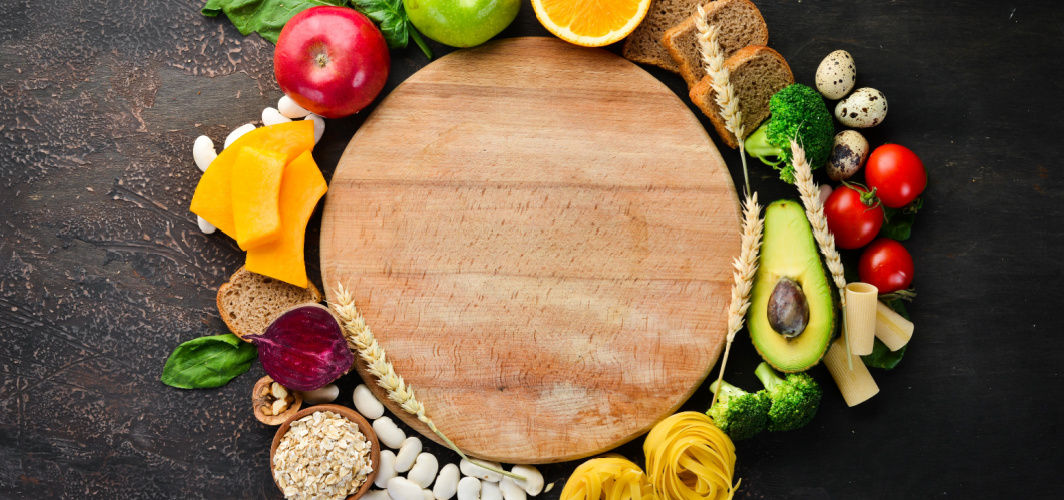Diabetes Management
Glycemic Index for Diabetes Management: Why it is Useful
6 min read
By Apollo 24/7, Published on - 03 October 2020, Updated on - 28 August 2023
Share this article
2
14 likes

For most people with diabetes, managing blood glucose levels is a life-long mission. They must take care of factors that affect their blood glucose levels such as nutrition, physical activity, diet, stress, water intake, medications, alcohol consumption, etc. Of all these factors, nutrition is perhaps the most important one as the foods we consume contribute directly to the blood glucose levels in our body.
However, not all foods are created equal. Some foods are digested quickly and cause a rapid increase (or decrease) in our blood glucose levels. On the other hand, there are foods that are digested slowly and contribute to a smaller and slower increase in blood glucose levels. Depending on the rate of digestion and increase in blood glucose, foods are ranked on the basis of the glycaemic index (GI).
What Is Glycaemic Index?
The glycaemic index is a nutritional metric that is used to classify foods based on their impact on blood glucose levels. It was developed by a Canadian professor Dr David Jenkins in the early 1980s. The index assigns scores (on a scale of 0 - 100) to foods depending on how quickly the carbs present in them raise the blood glucose levels.
Categories Of Glycaemic Index
Glycaemic index (GI) classifies foods into 3 major categories:
- Low GI: 55 or less
- Medium GI: 56 - 69
- High GI: 70 - 100
Foods that are rich in protein, fibre, and fats usually have a low GI. On the other hand, foods that contain sugars and refined carbohydrates have a high GI.
Factors That Affect The Glycaemic Index Of Foods
- Cooking time: Foods that are cooked longer generally have a higher glycaemic index compared to uncooked foods or those cooked for shorter periods. Heating the foods increases the GI by increasing the availability of dietary carbs for digestive enzymes.
- Acidity: Foods that are acidic in nature have a lower GI than non-acidic foods. The acid content in foods slows down the conversion of carbs into glucose and delays their absorption into the blood.
- Fibre Content: Fiber-rich foods generally have a low glycaemic index as the body takes time to break down fibre. Moreover, fibre slows down the metabolization of carbs by digestive enzymes. This delays the absorption of glucose into the bloodstream.
- Processed Food: Processed or refined foods usually have a higher glycaemic index than non-processed foods. The fine particle size of refined foods supports the action of digestive enzymes by providing them with a greater surface area to attack and metabolize.
- Ripeness: Ripe fruits and vegetables usually have a higher GI than non-ripe or raw foods. The higher GI of ripened fruits and vegetables can be attributed to the breakdown of complex carbs into sugars during the ripening process.
Some Common Foods And Their GI Scores
Fruits
- Apples: 36
- Banana: 51
- Oranges: 43
- Mango: 51
- Strawberries: 41
- Pineapple: 59
- Watermelon: 76
- Dates: 42
Vegetables
- Carrots (boiled): 39
- Pumpkin (boiled): 74
- Sweet potatoes (boiled): 63
- Potatoes (boiled): 78
Grains
- Barley: 28
- Quinoa: 53
- Rolled oats: 55
- White rice: 73
- Brown rice: 68
- Parboiled rice: 38
- White rice: 73
- Whole wheat bread: 74
Legumes
- Chickpeas: 28
- Kidney beans: 24
- Lentils: 32
- Soybeans: 16
Dairy products/ alternatives
- Soymilk: 34
- Skim milk: 37
- Whole milk: 39
- Ice cream: 51
Sweeteners
- Table sugar: 65
- Fructose: 15
- Honey: 61
Benefits Of Glycaemic Index
A diet that includes low glycaemic index foods is associated with certain health benefits:
- Improves blood glucose control: According to researchers, a low GI diet can reduce blood glucose levels in people with type 2 diabetes.
- Supports weight loss: Some studies suggest that a low GI diet may support short-term weight loss.
- Lowers cholesterol levels: Incorporating low GI foods in the daily diet may contribute to a decline in levels of both total and LDL (bad) cholesterol. Reduced total and LDL cholesterol levels are associated with better cardiovascular (heart) health.
- May limit cancer risk: According to certain studies, people who consume a diet rich in high GI foods are at a greater risk of developing different types of cancers such as breast, colorectal and endometrial cancer, compared to people who follow a GI diet.
Limitations Of Glycaemic Index
Although the glycaemic index offers certain benefits, it is also associated with some drawbacks. Those include:
- GI doesn’t factor in the impact of a combination of 2 or more foods on blood glucose levels
- GI doesn’t take into account other factors that affect blood glucose levels, such as how the food is prepared or how much is consumed
- GI doesn’t consider foods that have little or no carbs such as eggs, chicken, fish, herbs, and spices
- GI doesn’t evaluate foods on the basis of nutrient content - some low GI foods are not exactly healthy, such as low-fat ice cream (GI 27–55)
It can also be difficult to estimate the GI of different foods. The problem is further compounded by the lack of GI ranking on the label of packaged foods.
Is Glycaemic Index Different From Glycaemic Load?
Yes, glycaemic index (GI) is different from the glycaemic load (GL). GI only assigns a score to a food item on the basis of how quickly it increases blood glucose levels. It doesn't take into account the portion size or amount of the food consumed. On the other hand, glycaemic load evaluates the impact of carbs on blood glucose levels by considering both the glycaemic index of foods as well the quantity (gram per serving) consumed. However, just like GI, glycaemic load classifies foods into 3 categories. These categories are Low (10 or fewer), Medium (11–19), and High (20 or more).
Tips For A Healthy Glycaemic Index-Based Diet
- Consume non-starchy vegetables, fruits, and beans such as apples, pears, peaches, and berries.
- Opt for grains in unprocessed or least-processed states. Such grains include brown rice, whole-kernel bread, stone-ground bread, steel-cut oats, whole barley, and millet.
- Reduce the intake of white potatoes and processed-grain products such as white bread and white pasta.
- Limit consumption of concentrated sweets and desserts such as fruit juices, ice cream, and sugary beverages.
- Increase the intake of foods rich in protein, such as beans, eggs (without yolk), fish, and boiled chicken.
- Reduce intake of unhealthy saturated and hydrogenated fats. Instead, opt for healthy fats found in olive oil, almonds, walnuts, and avocados. However, stick to moderate amounts.
Conclusion
The glycaemic index is a useful indicator for classifying different types of foods on the basis of their impact on blood glucose levels. A low GI diet is associated with multiple benefits for diabetes management, weight loss, and cardiovascular health. However, GI also has its limitations. Therefore, efforts should be made to follow a balanced and healthy diet while being well-informed about the GI of different foods. To know more about Glycaemic Index and other diet-related queries.
Consult Apollo's Expert Dieticians
You can also manage your diabetes like a pro with Apollo 24|7's 12-week empower programme.
Diabetes Management
Leave Comment
Recommended for you

Diabetes Management
How Do Menstrual Cycles Impact Blood Sugar Levels in Diabetes?
For individuals with diabetes, menstrual cycles introduce additional challenges in managing blood sugar levels. Hormone fluctuations during different phases of the cycle affect insulin sensitivity. While the menstruation phase usually maintains stable blood sugar levels, the follicular phase improves insulin sensitivity. Ovulation may lead to increased insulin resistance, and the luteal phase can cause insulin resistance to peak. To manage blood sugar during these cycles, regular monitoring, medication adjustments, a balanced diet, and consultation with healthcare providers are essential. Understanding these hormonal impacts empowers individuals with diabetes to achieve better control and complete well-being.

Diabetes Management
What to Eat to Lower Blood Sugar?
Balancing sugar levels is important for efficient diabetes management. Adding specific foods to your diet can make a significant difference. Fibre-rich foods like whole grains and legumes enable slow sugar absorption. Moreover, non-starchy vegetables and lean proteins help stabilise glucose levels. Additionally, healthy fats and antioxidant-rich berries offer additional support. Cinnamon can be helpful too for enhancing insulin sensitivity. Minimise processed foods with added sugars to ensure that your blood sugar levels stay under control.

Diabetes Management
Does Diabetes Increase the Risk of Heart Disease in Younger Women?
A study found that women with diabetes, regardless of age, had the highest adjusted hazard ratio (aHR) for coronary heart disease (CHD). Women under 55 years had a 10.71 aHR for CHD, while those over 75 years had a 3.47 aHR. Younger women showed more risk factors for CHD, including metabolic syndrome, hypertension, obesity, smoking, and high lipoprotein insulin resistance (LPIR) and LDL cholesterol levels. The study concluded that women under 55 years with type 2 diabetes face a tenfold higher risk of developing heart disease within two decades.
Subscribe
Sign up for our free Health Library Daily Newsletter
Get doctor-approved health tips, news, and more.
Visual Stories

8 Fruits That are Incredibly Healthy for Diabetes
Tap to continue exploring
Recommended for you

Diabetes Management
How Do Menstrual Cycles Impact Blood Sugar Levels in Diabetes?
For individuals with diabetes, menstrual cycles introduce additional challenges in managing blood sugar levels. Hormone fluctuations during different phases of the cycle affect insulin sensitivity. While the menstruation phase usually maintains stable blood sugar levels, the follicular phase improves insulin sensitivity. Ovulation may lead to increased insulin resistance, and the luteal phase can cause insulin resistance to peak. To manage blood sugar during these cycles, regular monitoring, medication adjustments, a balanced diet, and consultation with healthcare providers are essential. Understanding these hormonal impacts empowers individuals with diabetes to achieve better control and complete well-being.

Diabetes Management
What to Eat to Lower Blood Sugar?
Balancing sugar levels is important for efficient diabetes management. Adding specific foods to your diet can make a significant difference. Fibre-rich foods like whole grains and legumes enable slow sugar absorption. Moreover, non-starchy vegetables and lean proteins help stabilise glucose levels. Additionally, healthy fats and antioxidant-rich berries offer additional support. Cinnamon can be helpful too for enhancing insulin sensitivity. Minimise processed foods with added sugars to ensure that your blood sugar levels stay under control.

Diabetes Management
Does Diabetes Increase the Risk of Heart Disease in Younger Women?
A study found that women with diabetes, regardless of age, had the highest adjusted hazard ratio (aHR) for coronary heart disease (CHD). Women under 55 years had a 10.71 aHR for CHD, while those over 75 years had a 3.47 aHR. Younger women showed more risk factors for CHD, including metabolic syndrome, hypertension, obesity, smoking, and high lipoprotein insulin resistance (LPIR) and LDL cholesterol levels. The study concluded that women under 55 years with type 2 diabetes face a tenfold higher risk of developing heart disease within two decades.